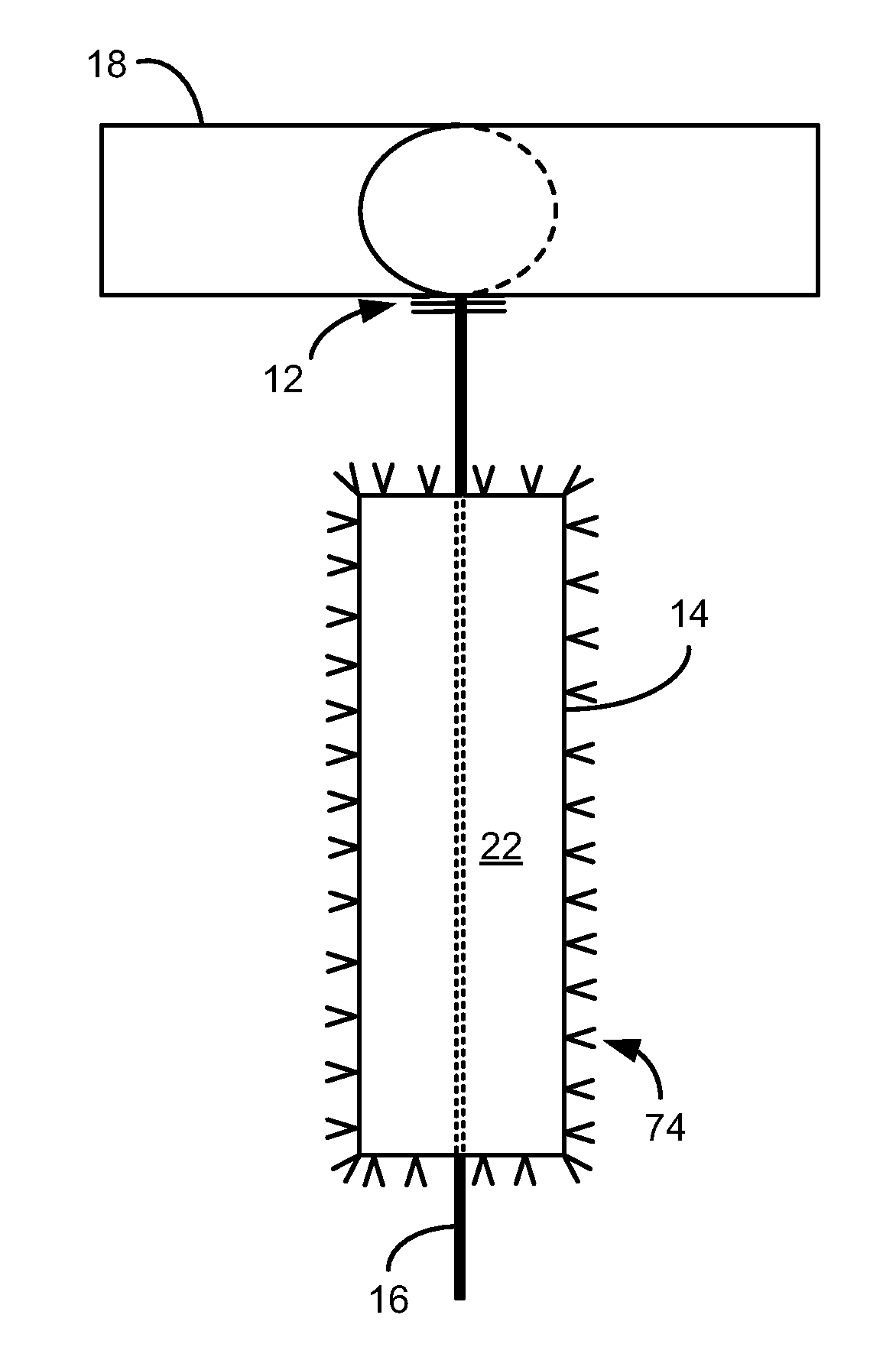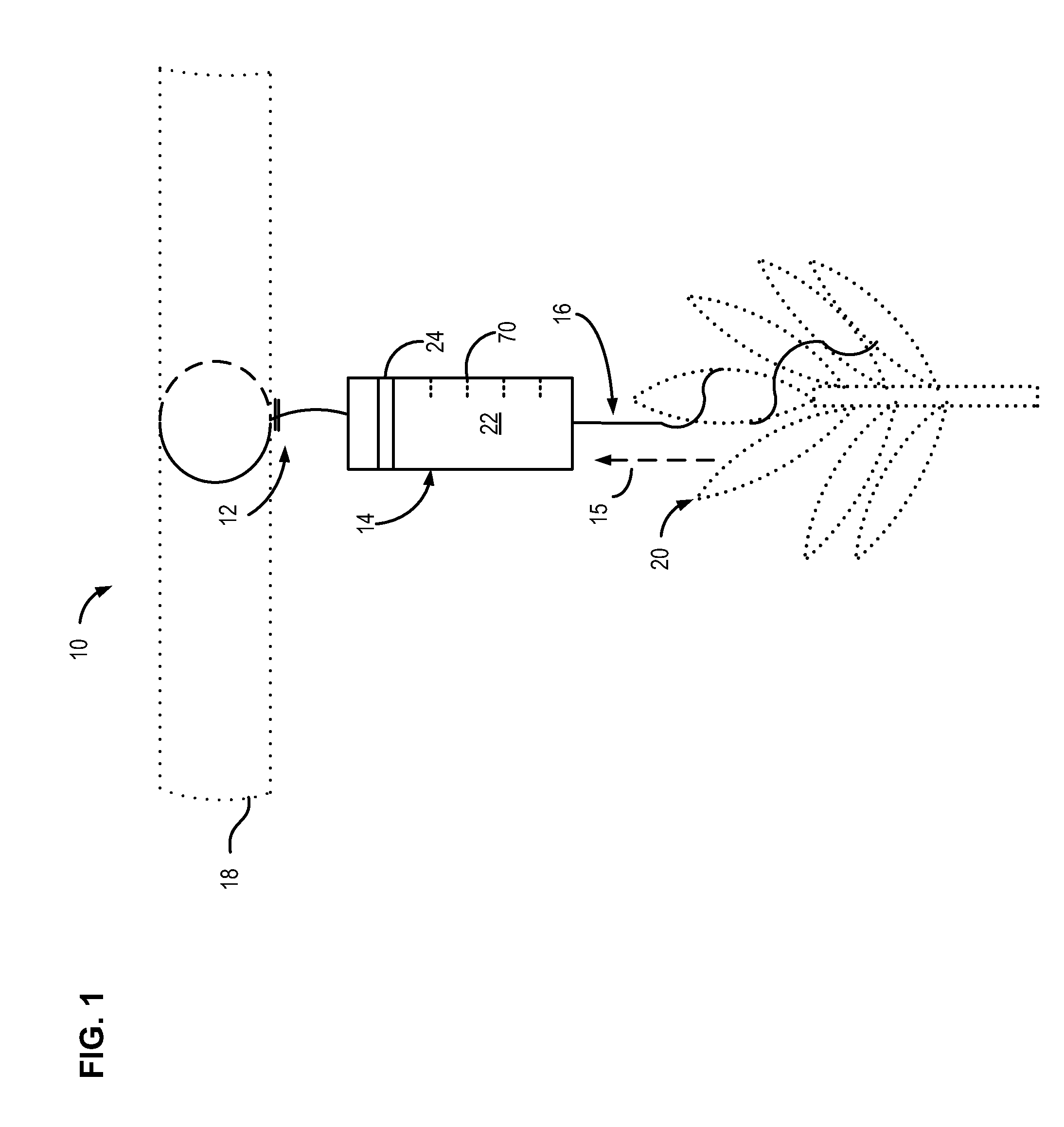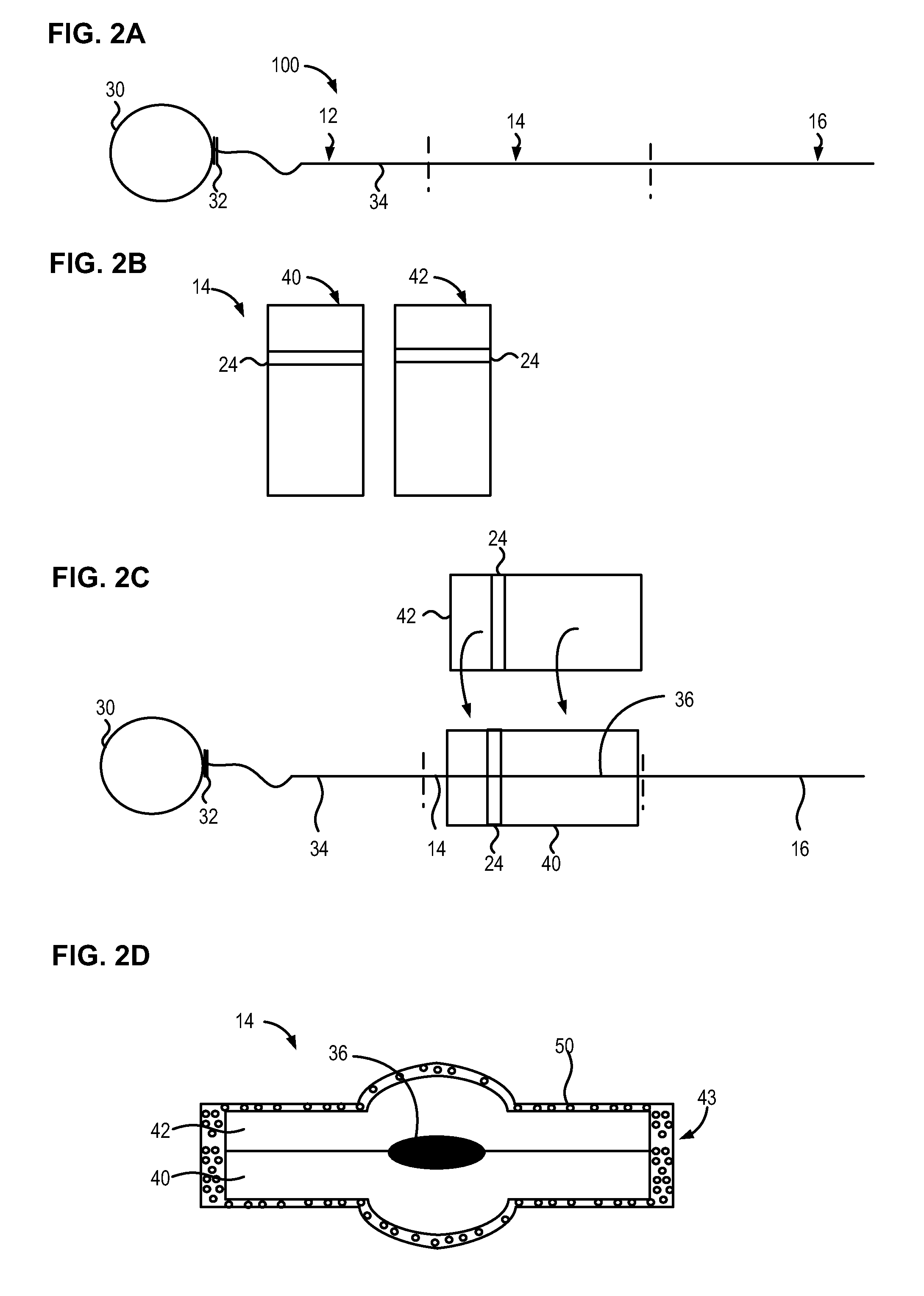Arthropod pest trapping device, system and method
- Summary
- Abstract
- Description
- Claims
- Application Information
AI Technical Summary
Benefits of technology
Problems solved by technology
Method used
Image
Examples
Embodiment Construction
[0022]The present description relates to an arachnid trapping device 10 configured to trap arthropods, particularly crawling arthropods, such as spider mites, thrips, aphids, and such others, feeding on leaves, flowers, buds or fruits of plants. Although described in regards to arachnids, and specifically spider mites, the arachnid trapping device could be used with any number of arthropods, including insects, such as crawling insects. Thus, it should be understood that this disclosure is directed to arthropod pests which commonly crawl and which exhibit similar predation patterns. Pests, as used herein, may include any suitable arthropod pest.
[0023]As detailed above, spider mites, in particular, are known to be common pests on many plants around yards and gardens. Generally, spider mites are considered to be medium-sized mites that feed on a wide variety of host plants from many different plant families. For example, Spider mites attack a wide range of flowering or seed-generating ...
PUM
 Login to View More
Login to View More Abstract
Description
Claims
Application Information
 Login to View More
Login to View More - R&D
- Intellectual Property
- Life Sciences
- Materials
- Tech Scout
- Unparalleled Data Quality
- Higher Quality Content
- 60% Fewer Hallucinations
Browse by: Latest US Patents, China's latest patents, Technical Efficacy Thesaurus, Application Domain, Technology Topic, Popular Technical Reports.
© 2025 PatSnap. All rights reserved.Legal|Privacy policy|Modern Slavery Act Transparency Statement|Sitemap|About US| Contact US: help@patsnap.com



